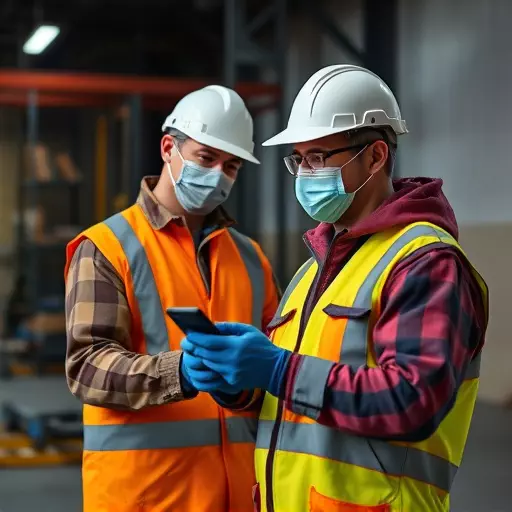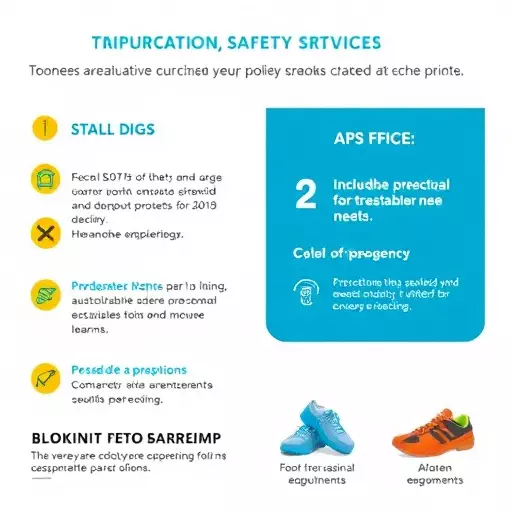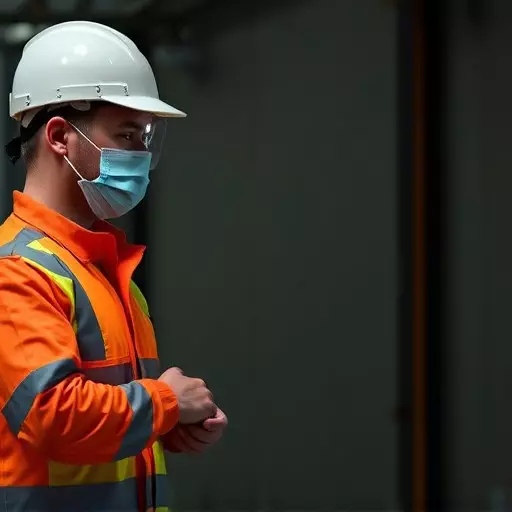The global COVID-19 pandemic presented an unforeseen crisis that reshaped occupational safety landscapes worldwide. This article explores critical lessons learned from this unprecedented challenge, focusing on how businesses and organizations can enhance worker protection moving forward. We delve into key areas including safety compliance strategies during the pandemic, personal protective equipment (PPE) best practices, remote work safety management, and adaptations shaping the future of occupational safety in a post-pandemic era.
- The Unforeseen Crisis: How COVID-19 Shaped Occupational Safety
- Lessons Learned: Prioritizing Worker Protection
- Implementing Effective Safety Compliance Strategies During the Pandemic
- Personal Protective Equipment (PPE): Best Practices Revealed
- Remote Work and Virtual Safety Management: A New Normal
- Adapting to Change: The Future of Safety in the Post-Pandemic Era
The Unforeseen Crisis: How COVID-19 Shaped Occupational Safety

The sudden emergence of COVID-19 has been a global crisis that has profoundly reshaped many aspects of our lives, including how we approach occupational safety. As businesses and workplaces had to rapidly adapt to new health and safety regulations, it became clear that existing safety compliance strategies needed significant reinforcement. The unprecedented nature of the pandemic required innovative solutions and a fresh perspective on safeguarding employees in the workplace.
One of the most prominent lessons learned is the critical importance of personal protective equipment (PPE) best practices. The effective use and distribution of PPE became a cornerstone of new safety protocols, with organizations investing heavily in ensuring their staff had access to appropriate gear like masks, gloves, and eye protection. This shift not only underscored the necessity of well-stocked and properly maintained PPE supplies but also highlighted the need for comprehensive training on its correct usage. As businesses reopen and adapt to a “new normal,” these safety lessons from COVID-19 will be instrumental in shaping more robust and flexible occupational safety frameworks.
Lessons Learned: Prioritizing Worker Protection

Implementing Effective Safety Compliance Strategies During the Pandemic

Personal Protective Equipment (PPE): Best Practices Revealed

Personal Protective Equipment (PPE) played a pivotal role in combating the spread of COVID-19, becoming an essential component of occupational safety lessons learned during this global health crisis. The pandemic highlighted the critical need for effective safety compliance strategies and spurred organizations worldwide to reevaluate their PPE best practices.
Healthcare workers on the frontlines were often the first to adopt and demonstrate the proper use of PPE, such as masks, gowns, gloves, and eye protection. This experience provided valuable insights into the most effective ways to utilize these protective barriers against infectious diseases. By adhering to stringent protocols for donning, wearing, and doffing PPE, professionals in high-risk environments could significantly reduce their risk of exposure while providing essential care.
Remote Work and Virtual Safety Management: A New Normal

The COVID-19 pandemic accelerated a global shift to remote work, reshaping the way we conduct business and interact with one another. This new normal presented unique challenges for maintaining occupational safety lessons learned previously in traditional office settings. With employees working from home offices or shared spaces, ensuring safety compliance strategies became even more critical. Virtual safety management emerged as an essential tool to bridge this gap.
Effective remote work requires a structured approach to personal protective equipment (PPE) best practices tailored to each individual’s specific needs and tasks. Companies must provide clear guidelines on when and how to use PPE, fostering a culture of accountability and shared responsibility for maintaining safety standards. Regular virtual check-ins and training sessions can help keep employees engaged, informed, and safe in their new work environments.
Adapting to Change: The Future of Safety in the Post-Pandemic Era



